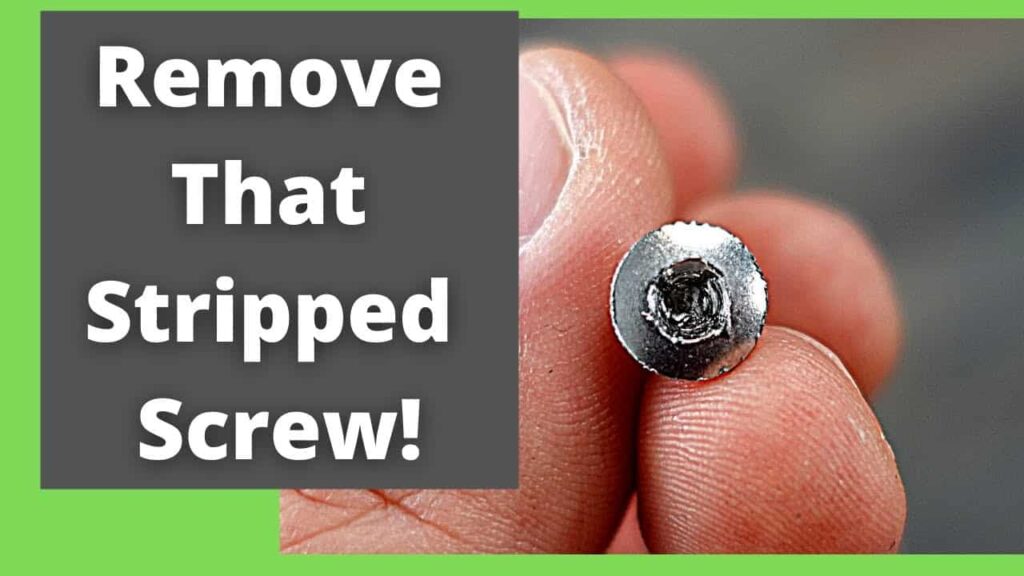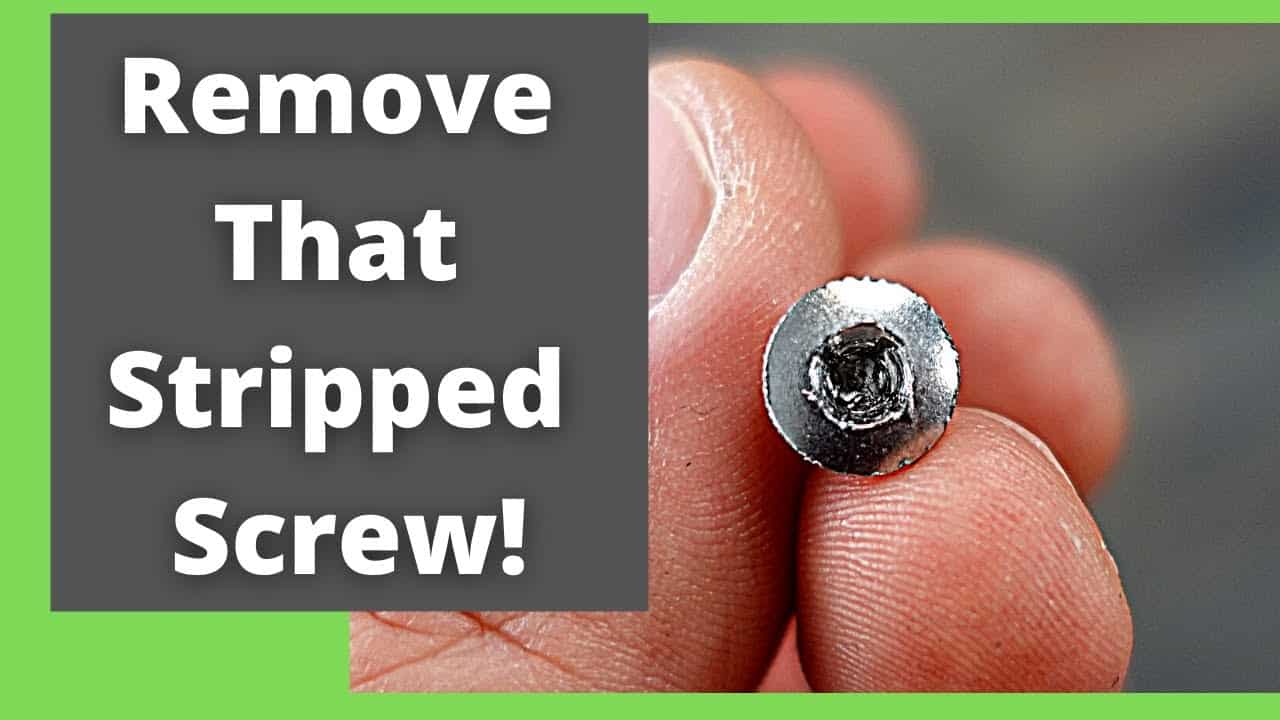
How to Get a Stripped or Stuck Screw Out: A Comprehensive Guide
Dealing with a stripped or stuck screw can be incredibly frustrating. Whether you’re working on a DIY project, repairing household items, or tackling a professional job, encountering a screw that refuses to budge can bring your progress to a screeching halt. This comprehensive guide provides you with a variety of methods and techniques to effectively remove stripped or stuck screws without causing further damage. We’ll cover everything from simple household hacks to specialized tools, ensuring you have the knowledge and skills needed to overcome this common problem.
Understanding Why Screws Get Stuck or Stripped
Before diving into the solutions, it’s essential to understand why screws get stuck or stripped in the first place. Several factors can contribute to this issue:
- Over-Tightening: Applying excessive force when tightening a screw can damage the screw head or the surrounding material, making it difficult to remove.
- Corrosion: Rust and corrosion can bind the screw to the material it’s embedded in, creating a strong resistance.
- Incorrect Tools: Using the wrong size or type of screwdriver can strip the screw head, making it impossible to grip.
- Damaged Screw Head: The screw head might already be damaged due to previous attempts to tighten or remove it.
- Thread Damage: The threads of the screw or the material it’s screwed into can be damaged, causing the screw to seize.
Essential Tools for Removing Stuck Screws
Having the right tools on hand can significantly increase your chances of successfully removing a stuck or stripped screw. Here are some essential tools you should consider:
- Screwdrivers: A variety of screwdrivers in different sizes and types (Phillips, flathead, Torx, etc.) is crucial.
- Screw Extractors: These specialized tools are designed to grip and remove stripped screws.
- Rubber Bands: A simple household item that can provide extra grip between the screwdriver and the screw head.
- Steel Wool: Similar to rubber bands, steel wool can fill the gap between the screwdriver and the screw head.
- Pliers: Useful for gripping the screw head if it protrudes enough.
- Vice Grips: Provide a strong grip on the screw head for turning.
- Hammer: Can be used to gently tap the screwdriver into the screw head for better grip.
- Penetrating Oil: Helps to loosen corroded screws.
- Heat Gun or Hair Dryer: Can help to expand the surrounding material, loosening the screw.
- Drill: For drilling out the screw head or using with screw extractors.
Methods for Removing Stuck Screws
Now, let’s explore various methods to remove stuck or stripped screws, starting with the simplest techniques and progressing to more advanced options.
1. Using a Rubber Band or Steel Wool
This is often the first and easiest method to try. The goal is to improve the grip between the screwdriver and the screw head.
- Place the Rubber Band or Steel Wool: Place a wide rubber band or a small piece of steel wool over the stripped screw head.
- Insert the Screwdriver: Insert the appropriate screwdriver into the screw head, pressing firmly. The rubber band or steel wool should fill the gap and provide extra grip.
- Apply Pressure and Turn: Apply steady pressure while turning the screwdriver slowly. Be careful not to strip the screw head further.
2. Applying Penetrating Oil
If corrosion is the culprit, penetrating oil can help to loosen the screw.
- Apply Penetrating Oil: Apply a generous amount of penetrating oil (such as WD-40 or Liquid Wrench) to the screw head and the surrounding area.
- Let it Soak: Allow the oil to soak for at least 15-30 minutes, or even longer for heavily corroded screws.
- Try to Remove the Screw: After soaking, try to remove the screw using a screwdriver. Apply steady pressure and turn slowly.
- Repeat if Necessary: If the screw still won’t budge, reapply the penetrating oil and let it soak for a longer period.
3. Tapping with a Hammer
Gently tapping the screwdriver with a hammer can help to create a better grip and break any corrosion.
- Insert the Screwdriver: Insert the appropriate screwdriver into the screw head.
- Tap the Screwdriver: Gently tap the end of the screwdriver with a hammer several times. This can help to seat the screwdriver and break any corrosion.
- Apply Pressure and Turn: Apply steady pressure while turning the screwdriver slowly.
4. Using a Wide Rubber Band and Pliers
This method combines the rubber band trick with the leverage of pliers.
- Place Rubber Band: Place a wide, thick rubber band over the screw head.
- Insert Pliers: Use pliers to grip the screw head through the rubber band. Make sure the pliers have a firm grip.
- Turn and Remove: Slowly turn the pliers to unscrew the stuck screw. The rubber band provides extra grip and protects the screw head.
5. Heating the Screw
Heat can help to expand the surrounding material, loosening the screw. This method is particularly useful for screws embedded in metal or wood.
- Apply Heat: Use a heat gun or hair dryer to heat the area around the screw head. Be careful not to overheat the material, especially if it’s plastic or wood.
- Try to Remove the Screw: After heating, try to remove the screw using a screwdriver. Apply steady pressure and turn slowly.
- Cooling (Optional): Sometimes, quickly cooling the screw after heating can further loosen it. You can use a can of compressed air turned upside down to apply a small amount of cooling to the screw head.
6. Using a Screw Extractor
Screw extractors are specialized tools designed to remove stripped screws. They come in various types, but the most common type consists of a drill bit and an extractor bit.
- Prepare the Screw: Use the drill bit to create a pilot hole in the center of the stripped screw head. Follow the instructions that come with your screw extractor set for the correct drill bit size.
- Insert the Extractor Bit: Insert the extractor bit into the pilot hole.
- Turn Counterclockwise: Apply pressure and turn the extractor bit counterclockwise. The extractor bit is designed to grip the screw and turn it out.
7. Using a Dremel Tool
If the screw head is severely damaged, you can use a Dremel tool to create a new slot for a flathead screwdriver.
- Create a Slot: Use a cutting wheel attachment on the Dremel tool to carefully cut a slot across the screw head.
- Insert a Flathead Screwdriver: Insert a flathead screwdriver into the new slot.
- Apply Pressure and Turn: Apply steady pressure while turning the screwdriver slowly.
8. Drilling Out the Screw Head
As a last resort, you can drill out the screw head completely. This will remove the head, allowing you to remove the remaining screw shaft with pliers or vice grips.
- Select a Drill Bit: Select a drill bit that is slightly smaller than the diameter of the screw head.
- Drill Out the Head: Carefully drill into the screw head until it separates from the shaft.
- Remove the Shaft: Once the head is removed, you can use pliers or vice grips to grip the remaining screw shaft and turn it out.
9. Using Vice Grips or Locking Pliers
If the screw head is protruding enough, vice grips or locking pliers can provide a strong grip for turning.
- Grip the Screw Head: Use vice grips or locking pliers to firmly grip the screw head.
- Turn Counterclockwise: Apply pressure and turn the vice grips or locking pliers counterclockwise to unscrew the screw.
10. Welding a Nut to the Screw Head
This method requires welding equipment and experience. It involves welding a nut to the screw head, providing a solid grip for turning.
- Position the Nut: Position a nut over the screw head.
- Weld the Nut: Weld the nut to the screw head, ensuring a strong connection.
- Turn the Nut: Use a wrench to turn the nut, unscrewing the stuck screw.
Preventing Screws from Getting Stuck or Stripped
Prevention is always better than cure. Here are some tips to prevent screws from getting stuck or stripped in the first place:
- Use the Right Tools: Always use the correct size and type of screwdriver for the screw.
- Apply Steady Pressure: Apply steady pressure when tightening or loosening screws.
- Avoid Over-Tightening: Be careful not to over-tighten screws, as this can damage the screw head or the surrounding material.
- Lubricate the Screws: Apply a small amount of lubricant to the screw threads before inserting them, especially when working with metal or wood.
- Use High-Quality Screws: Invest in high-quality screws that are less likely to strip or break.
- Pre-Drill Pilot Holes: When working with wood, pre-drilling pilot holes can prevent the wood from splitting and make it easier to insert screws.
Conclusion
Removing a stripped or stuck screw can be a challenging task, but with the right tools and techniques, it’s definitely achievable. By understanding the reasons why screws get stuck or stripped and by following the methods outlined in this guide, you can effectively remove even the most stubborn screws without causing further damage. Remember to start with the simplest methods and progress to more advanced techniques as needed. And, most importantly, always take your time and be patient. With a little persistence, you’ll be able to conquer any stuck screw and get your project back on track.

